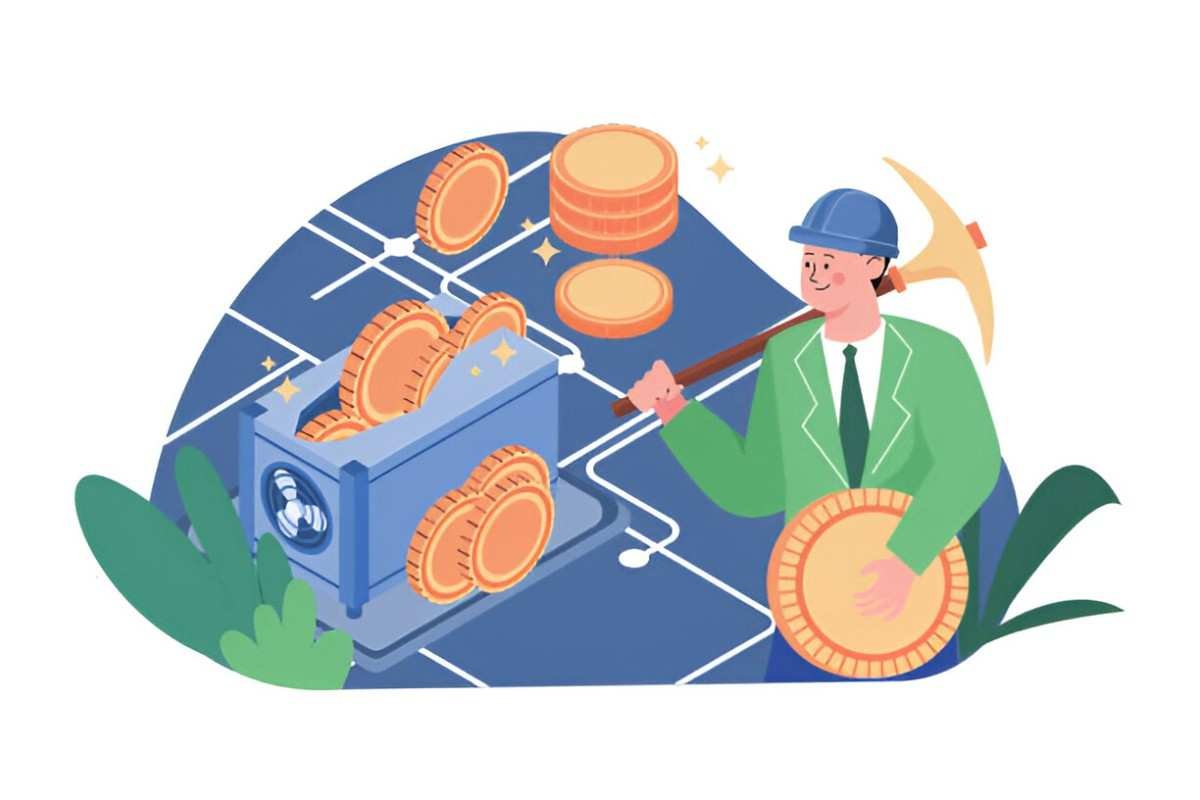Crypto mining has gained a lot of attention in recent years. With the rise of digital currencies, many individuals are exploring ways to invest in and profit from this growing industry. One option that I have found particularly intriguing is single proprietorship crypto mining. This model allows an individual, rather than a company or partnership, to own and operate their own mining operation. In this article, I’ll dive deep into the world of single proprietorship crypto mining, sharing my personal insights, experiences, and calculations to guide anyone interested in exploring this path.
Table of Contents
What is Single Proprietorship Crypto Mining?
A single proprietorship in crypto mining refers to an individual who operates and manages their own mining setup. This person, or “miner,” invests in the necessary hardware, software, and electricity costs, with the goal of mining cryptocurrency and earning profits. Unlike larger operations that may involve multiple people or investors, a single proprietorship means that the miner is the sole person responsible for all aspects of the business, from the initial investment to the ongoing management.
In simpler terms, if you want to mine crypto as a solo venture and keep all the profits (or losses), this is the model for you. As the owner of the mining setup, you’ll be in full control of the decisions, risks, and rewards that come with mining.
The Basics of Crypto Mining
Before diving deeper into the specifics of a single proprietorship crypto mining business, let’s quickly review the basics of crypto mining. At its core, crypto mining involves solving complex mathematical puzzles using computer processing power. These puzzles are necessary for validating transactions and securing the blockchain network. Miners compete to solve these puzzles, and the first one to do so gets to add a new block to the blockchain. As a reward, they receive cryptocurrency (such as Bitcoin or Ethereum) as compensation.
Crypto mining requires significant computational power, which means miners need specialized hardware, typically in the form of Graphics Processing Units (GPUs) or Application-Specific Integrated Circuits (ASICs). These devices are designed to handle the demanding calculations required by mining algorithms.
The Single Proprietorship Model
In the context of single proprietorship crypto mining, the miner is responsible for setting up and maintaining all aspects of the operation. This includes purchasing and setting up hardware, managing software, overseeing the electricity costs, and handling any repairs or troubleshooting.
I personally decided to venture into this type of mining because of its flexibility. As a single proprietor, I have complete control over every aspect of the operation. I’m not sharing profits or decision-making power with anyone else, and I can adjust my strategy as needed based on market conditions.
Advantages of Single Proprietorship Crypto Mining
While the idea of managing everything on my own can seem daunting at first, I’ve found that there are several key advantages to running a single proprietorship crypto mining business:
- Full Control: As a single proprietor, I have full control over the decision-making process. I decide which cryptocurrencies to mine, which mining pools to join, and when to upgrade or sell my equipment.
- All Profits Go to You: Any profit made from mining goes directly into my pocket. There’s no need to split earnings with other people or partners. This is especially attractive to those who prefer to handle their own investments and keep all the returns.
- Flexibility: As a single miner, I can adjust my operations quickly. If I want to switch mining algorithms, change hardware, or alter my energy consumption strategy, I can do so without needing to get approval from a team or board.
- Lower Overhead Costs: I can start small and scale as needed. There’s no need to maintain a large team or deal with the complexities of partnerships. I can also avoid the high overhead costs that come with large mining farms.
- Simplicity in Management: With just one person managing the operation, the complexity of coordination and communication is minimized. I can quickly troubleshoot issues and make decisions without waiting for input from others.
Challenges of Single Proprietorship Crypto Mining
While the single proprietorship model is appealing in many ways, it’s not without its challenges. Here are some difficulties I’ve encountered and how they can impact the business:
- High Initial Investment: One of the biggest hurdles I faced when starting my crypto mining operation was the cost of equipment. Mining hardware, especially ASIC miners, can be quite expensive. For instance, a single high-quality ASIC miner can cost anywhere from $1,000 to $10,000, depending on the model and its mining power. This upfront investment can be a barrier for many new miners.
- Electricity Costs: Mining consumes a significant amount of electricity, and I’ve found that this is one of the ongoing expenses that can eat into profits. For example, if you’re mining Bitcoin, the energy consumption can be as high as 1,400 kWh per month for a single miner. This can result in monthly electricity bills ranging from $100 to $500 or more, depending on the location and the energy efficiency of the equipment.
- Technical Knowledge: Running a successful mining operation requires a certain level of technical expertise. I had to learn how to set up mining rigs, configure mining software, and maintain the hardware. There’s also a risk of hardware failure, and I’ve experienced a few instances where I had to replace faulty parts. Without technical knowledge, it can be challenging to troubleshoot issues and maintain the equipment.
- Market Volatility: The cryptocurrency market is known for its volatility, and mining rewards are directly tied to the market’s performance. If the price of the mined cryptocurrency drops, my mining rewards can be significantly reduced. Similarly, if the mining difficulty increases, it can make mining less profitable, which adds an extra layer of risk to the venture.
- Time Investment: Managing a mining operation is not a passive income source. I’ve spent a lot of time monitoring the performance of my equipment, keeping up with updates to mining software, and ensuring everything is running smoothly. It’s important to keep track of the market and adjust my mining strategy accordingly.
Setting Up Your Single Proprietorship Crypto Mining Operation
Starting a single proprietorship crypto mining operation can be broken down into a few key steps. I’ll share my experience with setting up my own mining venture.
1. Choose Your Cryptocurrency to Mine
The first step in my mining journey was deciding which cryptocurrency I wanted to mine. The most popular options are Bitcoin (BTC), Ethereum (ETH), and Litecoin (LTC). However, there are many other altcoins available that might be more profitable to mine, depending on factors like mining difficulty, hash rates, and electricity costs.
I decided to start with Bitcoin mining, as it has the most established network and the highest value per coin. However, the mining difficulty for Bitcoin is quite high, and the equipment required is expensive.
2. Purchase Mining Equipment
Next, I needed to invest in mining hardware. Since I was mining Bitcoin, I opted for ASIC miners. These are specialized machines designed specifically for cryptocurrency mining, offering much higher efficiency and hash rates compared to regular computers or GPUs.
Here’s a basic comparison table of the most common mining hardware I considered:
| Hardware Type | Hash Rate (TH/s) | Power Consumption (Watts) | Cost Estimate ($) |
|---|---|---|---|
| Antminer S19 Pro | 110 | 3250 | 7,000 |
| Whatsminer M30S | 86 | 3344 | 6,500 |
| Antminer T19 | 84 | 3150 | 4,500 |
3. Set Up Your Mining Rig
Setting up the mining rig involved configuring the hardware and software. For Bitcoin mining, I installed mining software like CGMiner or BFGMiner, which helped manage the mining process. I connected my mining hardware to the software and ensured everything was running correctly.
4. Calculate the Costs
It’s crucial to understand the financial side of mining before diving in. The costs of running a mining operation can be high, and profitability is not guaranteed. Let’s break down some of the costs I had to consider:
- Initial hardware investment: $7,000 for an Antminer S19 Pro
- Electricity cost: $0.10 per kWh (average U.S. rate)
- Power consumption: 3250 watts per hour
- Mining profitability: Based on current Bitcoin prices, I estimated earning approximately 0.0005 BTC per day, which at $30,000 per BTC equates to $15 per day.
Example Calculation:
Let’s say I run my Antminer S19 Pro 24/7 for a month. The electricity cost would be:
- 3250 watts = 3.25 kW per hour
- 3.25 kW × 24 hours = 78 kWh per day
- 78 kWh × 30 days = 2,340 kWh per month
- 2,340 kWh × $0.10 = $234 per month in electricity costs
If I earn $15 per day from mining, my monthly earnings would be:
- $15 × 30 = $450
Subtracting the electricity cost:
- $450 – $234 = $216 in net profit for the month
These numbers can fluctuate based on Bitcoin’s price, mining difficulty, and electricity rates, but this gives a rough idea of the financials.
Conclusion: Is Single Proprietorship Crypto Mining Right for You?
Based on my experience, single proprietorship crypto mining can be a rewarding yet challenging endeavor. It offers full control and the potential for significant profits, but it also comes with risks and substantial upfront costs. The key to success in this venture lies in understanding the technical, financial, and market aspects of the business.
If you’re willing to put in the time, energy, and investment required, single proprietorship crypto mining can be a solid business model. Just be prepared for the learning curve, and make sure to stay informed about the ever-evolving cryptocurrency landscape.





